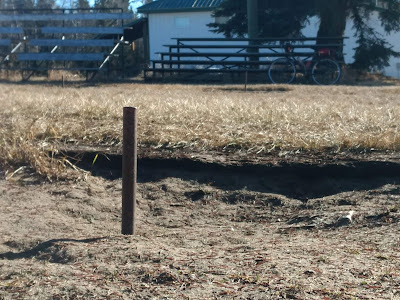High on my
list of favorite winter activities is a bike ride on a quiet gravel road on a
cold, sunny day.
Here are a
few pics from the loop ride Val and I did west of Leduc on Sunday, starting at
old Gnadenthal Lutheran Church, on the corner of RR 261 and TR 494.
What seemed,
at first glance, to be a barren and desolate landscape turned out to be full of
life. The many dogs of Leduc County were excited to see us; they greeted us
enthusiastically. Only one gave us an actual scare, sneaking up on us in full
stealth mode, not alerting us to his presence until he was on us. But even he
was in too good of a mood to actually go through with anything menacing.
More surprisingly, we
encountered no less than three horseback riders clopping down the middle of
these country roads. Apparently we aren’t the only ones who enjoy a winter
Sunday ride.
But in the end it’s the
sun--weak-ass as it is, barely able to peek over the trees by mid-afternoon--that makes a
winter ride more than just pedalling. That muted light hitting the frost in the
trees and the snowy fields or the glare off ice patches on the road or a country church spire--that’s
the magic of this time of year.




























